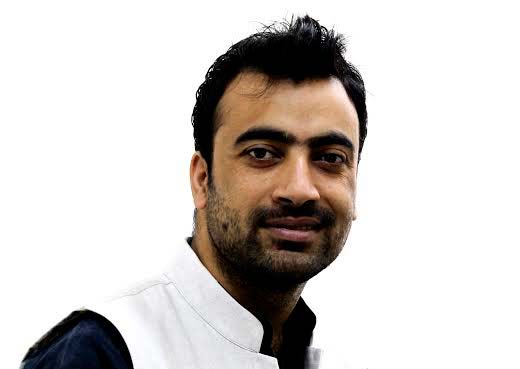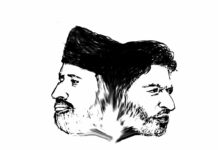In his first tenure as the chief minister of Jammu and Kashmir, Mufti Mohammad Sayeed contrived a healing-touch policy, inspired in many ways by Indian Army’s Sadhbhavna project. Both consider people of Kashmir are “hurt and alienated” and therefore require “healed and integrated”.
Considered as a “soft-separatist” political party, a narrative constructed by the media, the Peoples Democratic Party (PDP) has been instrumental in pacifying not only scores of youth, but have also been successful in involving many journalists, activists and academics in the party fold.
In his second innings, Mufti appears to be trying to take his integrationist agenda even further. In doing so, it appears, PDP is trying befriending people who are rallying for the cause of Kashmir, as well as those who support that cause. It seems that Mufti is trying to engage various constituents in a war of wits. With full support from the media, who help him maintain and build a pro-Pakistan image, Mufti’s PDP seems to be functioning like an NGO, delegated with conducting conflict transformation, a sophisticated approach of ensuring a status quo.
During the last decade, Indian NGOs have not only established themselves completely in Kashmir, they have also managed to penetrate deep into the educational structure through the support of political parties, mainly the PDP.
Dozens of young students from various colleges in Kashmir are flown out, almost after every three months, and put through the process of reconciliation in the luxurious Indian Habitat Centre in Delhi. These students include aspiring journalists, politicians’ kin and their friends, and those who have a potential reach on social networking sites like Facebook. A Delhi peacenik is known to have told a youth leader of PDP who is involved in sending these students to Delhi, that he is the future chief minister of Jammu and Kashmir.
In the run-up to the 2014 assembly elections in Kashmir, PDP hired these ‘reconciled’ people from Delhi for writing manifestoes, press releases, opinion pieces and maintaining a constant presence on social media. Not only did they succeed in winning numbers to form the government, they also made people from potential boycotted constituencies cast their vote.
It is being argued that the high voter turnout in the recent assembly elections in Kashmir was a result of the fear of the Bharatiya Janata Party (BJP) coming to power. This notion, generated by pro-India political parties, was peddled by the media. Even though BJP had employed its volunteers in Kashmir and found candidates to contest elections, they still lacked the mass support which would be the key to winning.
The participation of people in the election process is ensured through a system of intimidation and fear. The machinations of military oppression, initially employed in rural areas, have been transported to urban locales by police. Hundreds of youngsters are arrested and booked under laws such as Public Safety Act (PSA). However, those who are pushed to the wall are released after local pro-India politicians intervene. Later, these people are expected to reciprocate the favour during elections.
Campaign speeches and songs expose the underbelly of elections in Kashmir. They are an indication and acknowledgement of institutionalised violence and fear.
Consider these lines from the campaign song of PDP.
“Farooq Sahab yeli Delhi draav, STF heth wapas aave… Su din’ayvo maar dilbaro, Jan Mufti Sarkar dilabro”
(When Farooq Abdullah left for Delhi, he returned with STF (Special Task Force). He will get you beaten, my friend, Mufti’s government is better, my friend).
The National-Congress song follows a similar line of self-defeating poetics.
The author studies Conflict Analysis and Peace Building at Nelson Mandela Centre for Peace and Conflict Studies, Jamia Millia Islamia Central University, NewDelhi and can be contacted at [email protected]
















